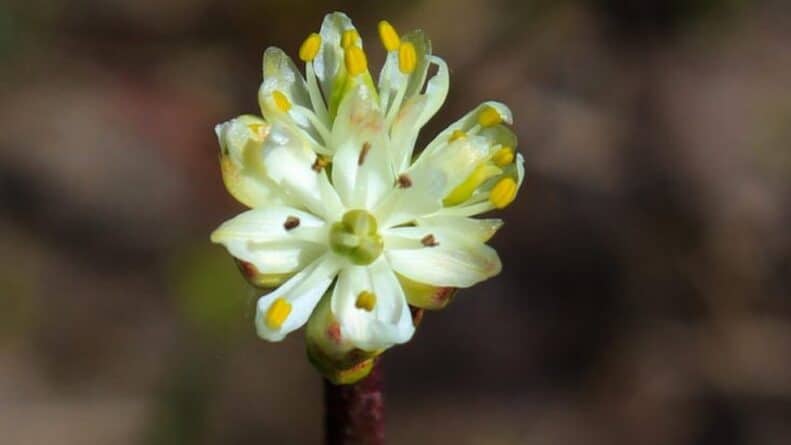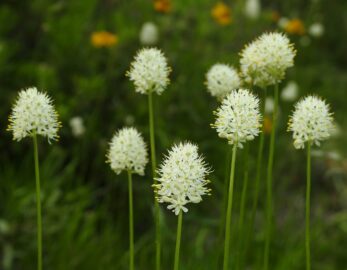:
In nature, trophic relationships are more common when animals eat plants. But in some cases, in nutrient-poor environments, the opposite can happen: carnivorous plants take the necessary minerals for life and reproduction from animals that they capture, luring them to themselves.
Predation is believed to have arisen independently eleven times in different groups of plants, of which there are now several hundred species. We generally think of “carnivores” as tropical, bizarrely shaped creatures, but they may not have an exotic appearance at all, but are so common that even scientists have not noticed their predatory nature for decades. This happened with the plant described in a new work by scientists from the University of British Columbia and the University of Wisconsin at Madison.
What kind of plant is this? 
 photo: bbci.co.uk
photo: bbci.co.uk
We are talking about a small herbaceous plant of the Tofield family Triantha occidentalis, common in western North America in nutrient-poor environments, such as swamps. During the flowering period, it forms a long peduncle, up to 80 centimeters, with numerous tiny hairs that secrete a sticky substance and have a reddish color, which is suspiciously similar to the sundews with which they often share territory.
However, T. occidentalis was not considered predatory , since its sticky hairs are located close to the flowers. This is unusual for most carnivorous plants, since it does not seem very beneficial for potential pollinating insects to stick to the plant without transferring pollen.
Doubts regarding nutrition have intensified after a molecular genetic study of the evolution of a number of Particulates, which includes T. occidentalis. It turned out that T. occidentalis is missing some genes, like many other carnivorous plants. In particular, those that are responsible for the possibility of photosynthesis in environments with variable lighting. Subsequently, botanists conducted an experiment with T. occidentalis to find out whether it actually feeds on animals.
Scientists tagged fruit flies with an isotope of nitrogen, rarely found in nature, and fed them in a swamp to eat ten T. occidentalis and ten similar-sized plants that are definitely not predatory — Erigeron peregrinus. They looked to see if isotopes would transfer from insects to plants, indicating that the insects had been eaten.
What did the study show? 
 photo: inaturalist.com
photo: inaturalist.com
After two weeks, nitrogen isotopes from fruit flies were found in the stems, leaves and fruits of T. occidentalis, but were not found in parts of Erigeron peregrinus. The scientists estimate that 64% of the nitrogen in T. occidentalis came from tagged fruit flies. Further experiments showed that the plant's hairs secrete the enzyme phosphatase, which allows it to extract nutrients from insects and is characteristic of other carnivorous plants. The authors consider the research to support the idea that T. occidentalis is a predator. Thus, it is the first discovered partially predatory plant (since sticky hairs are present only during the flowering period) of the Particulates, but perhaps not the last.
As for why the trapping devices are located so close to the flowers, then scientists have their own explanation. In their opinion, sticky hairs are able to capture only small insects, and large pollinators, such as butterflies and bees, do not stick too much and can easily be released.